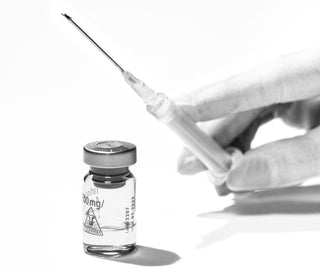Ozone therapy is a method that uses ozone (O3), a gas with strong oxidative properties. Ozone is used for medical purposes as a powerful antiseptic, anti-inflammatory, and immunomodulatory agent. Ozone injections are one of the forms of ozone therapy used to treat various diseases and for cosmetic purposes.
Applications of ozone injections:
1. In medicine:
- To improve blood circulation. Ozone is used to improve microcirculation and to treat atherosclerosis and ischemic diseases.
- To fight infections. Ozone has bactericidal, antifungal, and antiviral properties, making it effective in treating infections, wounds, ulcers, and other inflammatory processes.
- For joint diseases. Ozone is injected into the joints to reduce inflammation and pain in conditions such as arthritis or arthrosis.
Types of ozone injections:
- For venous issues, such as spider veins;
- For joint pain in the joint area;
- For chronic pain in “trigger points,” such as in chronic radiculitis;
- For wounds that do not heal for a long time.
2. In cosmetology:
- Skin rejuvenation. Ozone injections stimulate collagen production, improving skin condition, reducing fine wrinkles, and enhancing complexion.
- Acne treatment. Ozone has antiseptic and anti-inflammatory effects, which help treat acne.
- Cellulite and fat deposits. Ozone is used to improve lymphatic drainage and stimulate metabolism, helping fight cellulite.
Ozone injections in aesthetic medicine:
- To fight cellulite;
- "Biorevitalization."
3. Trichology
Hair loss, excessive oiliness, brittleness, seborrhea, and dermatitis – all of these conditions can be treated with ozone. Ozone improves the structure of hair and restores its growth process.
The use of ozone therapy for hair is one of the main methods of fighting alopecia. The high effectiveness of this treatment is due to the beneficial effects of ozone on microcirculation and the problematic areas of the scalp with low oxygen levels, as well as its antiviral, anti-inflammatory, and bactericidal properties.
Ozone therapy can quickly remove harmful substances from the body, restore the structure of existing hair, and activate the growth of new hair. After a course of procedures, blood flow, lymph flow, and overall nourishment of the hair roots improve.
- Intense hair loss;
- Weak hair roots;
- Slow hair growth;
- Lack of vitamins and trace elements for hair;
- Dandruff formation;
- Seborrhea.
Ozone injections
- Injections into the scalp improve hair growth, reduce excessive oiliness, and combat dandruff. Scalp injections should be done in a course of 10-15 procedures. Frequency: 2 times a week.
- Ozone injections for biorevitalization of the skin of the face and hands. The procedure helps improve microcirculation in these areas, fights inflammatory processes such as acne and atopic dermatitis, and improves skin quality by enriching it with oxygen. Frequency: 2 times a week. Course: 5-10 procedures.
- Injections into trigger points (pain points). These can be performed across the body, for back pain and limb pain. Phantom pain, pain in burn areas, and scars can also be treated. Ozone injections reduce chronic pain by enriching the tissues with oxygen. Frequency: 2-3 times a week. Course: 4-8 procedures. Depending on the area and level of pain, a longer course may be necessary. The course can be repeated every 3-12 months, depending on the recurrence of pain and the duration of the effect.
- Injections into joints for joint pain in the limbs, but not during an active inflammatory process inside. The number of procedures depends on the level and area of pain. Up to 10 procedures may be required over 2 months.
How the procedure is performed:
Methods of administration:
- Subcutaneously and intradermally. For cosmetic purposes, ozone is injected into face, neck, décolleté area, or problem areas of the body.
- Intra-articularly. Ozone is injected into the joints to relieve pain and inflammation.
Number of procedures:
- The treatment course depends on the specific problem and the patient’s condition, but typically requires 5 to 15 procedures.
- For general health improvement or cosmetic effects, treatments can be done once every 1-2 weeks.
- In cases of chronic diseases, the course may be repeated several times a year. Typically, the course consists of 5-10 procedures with an interval of 2-3 days. For maintenance effects, repeated courses may be needed every 6 months.
Contradictions
- Blood clotting disorders,
- Cardiovascular diseases (certain forms),
- Hyperthyroidism,
- Pregnancy,
- Acute intoxications,
- Allergic reactions to ozone.
